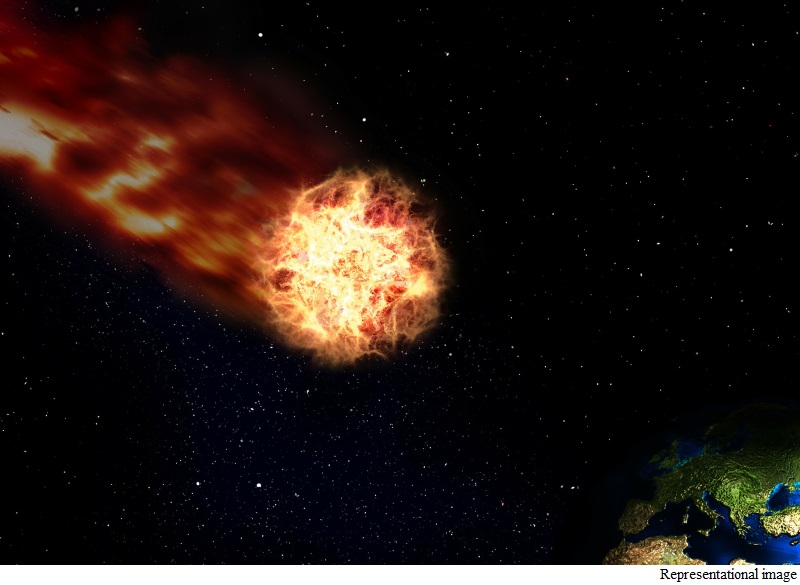- Home
- Science
- Science News
- Artificial Comet May Help Decode Origin of Life on Earth
Artificial Comet May Help Decode Origin of Life on Earth

The genetic material of all living organisms on Earth, as well as of viruses, is made up of nucleic acids, DNA and RNA.
Scientists have long wondered about the origin of these biological compounds.
Some believe that the Earth was seeded by comets or asteroids that contained the basic building blocks needed to form such molecules.
Ribose, the other key component of RNA, had never yet been detected in extraterrestrial material or created in the laboratory under "astrophysical" conditions.
Now, by simulating the evolution of the interstellar ice making up comets in the lab, French research teams have successfully obtained ribose - a key step in understanding the origin of RNA and of life.
To obtain this result, scientists at the Institut de Chimie de Nice, University of Nice-Sophia Antipolis, in France carried out a highly detailed analysis of an artificial comet.
The astrophysicists simulated the formation of dust grains coated with ice, the raw material of comets.
They then proposed the first realistic scenario for the formation of this key compound which had never been detected in meteorites or cometary ices until now.
Although the existence of ribose in real comets remains to be confirmed, this discovery completes the list of the molecular building blocks of life that can be formed in interstellar ice.
"It also lends further support to the theory that comets are the source of the organic molecules that made life possible on Earth, and perhaps elsewhere in the universe," the authors noted in a paper published in the journal Science.
Get your daily dose of tech news, reviews, and insights, in under 80 characters on Gadgets 360 Turbo. Connect with fellow tech lovers on our Forum. Follow us on X, Facebook, WhatsApp, Threads and Google News for instant updates. Catch all the action on our YouTube channel.
Related Stories
- Samsung Galaxy Unpacked 2025
- ChatGPT
- Redmi Note 14 Pro+
- iPhone 16
- Apple Vision Pro
- Oneplus 12
- OnePlus Nord CE 3 Lite 5G
- iPhone 13
- Xiaomi 14 Pro
- Oppo Find N3
- Tecno Spark Go (2023)
- Realme V30
- Best Phones Under 25000
- Samsung Galaxy S24 Series
- Cryptocurrency
- iQoo 12
- Samsung Galaxy S24 Ultra
- Giottus
- Samsung Galaxy Z Flip 5
- Apple 'Scary Fast'
- Housefull 5
- GoPro Hero 12 Black Review
- Invincible Season 2
- JioGlass
- HD Ready TV
- Laptop Under 50000
- Smartwatch Under 10000
- Latest Mobile Phones
- Compare Phones
- Redmi Note 15 5G
- Redmi Note 15 Pro 5G
- Redmi Note 15 Pro+ 5G
- Lava Play Max
- Poco C85 5G
- Honor Magic 8 Lite
- Jolla Phone
- Realme P4x 5G
- Asus ProArt P16
- MacBook Pro 14-inch (M5, 2025)
- OnePlus Pad Go 2
- Poco Pad M1
- Just Corseca Skywatch Pro
- Honor Watch X5
- Acerpure Nitro Z Series 100-inch QLED TV
- Samsung 43 Inch LED Ultra HD (4K) Smart TV (UA43UE81AFULXL)
- Asus ROG Ally
- Nintendo Switch Lite
- Haier 1.6 Ton 5 Star Inverter Split AC (HSU19G-MZAID5BN-INV)
- Haier 1.6 Ton 5 Star Inverter Split AC (HSU19G-MZAIM5BN-INV)















